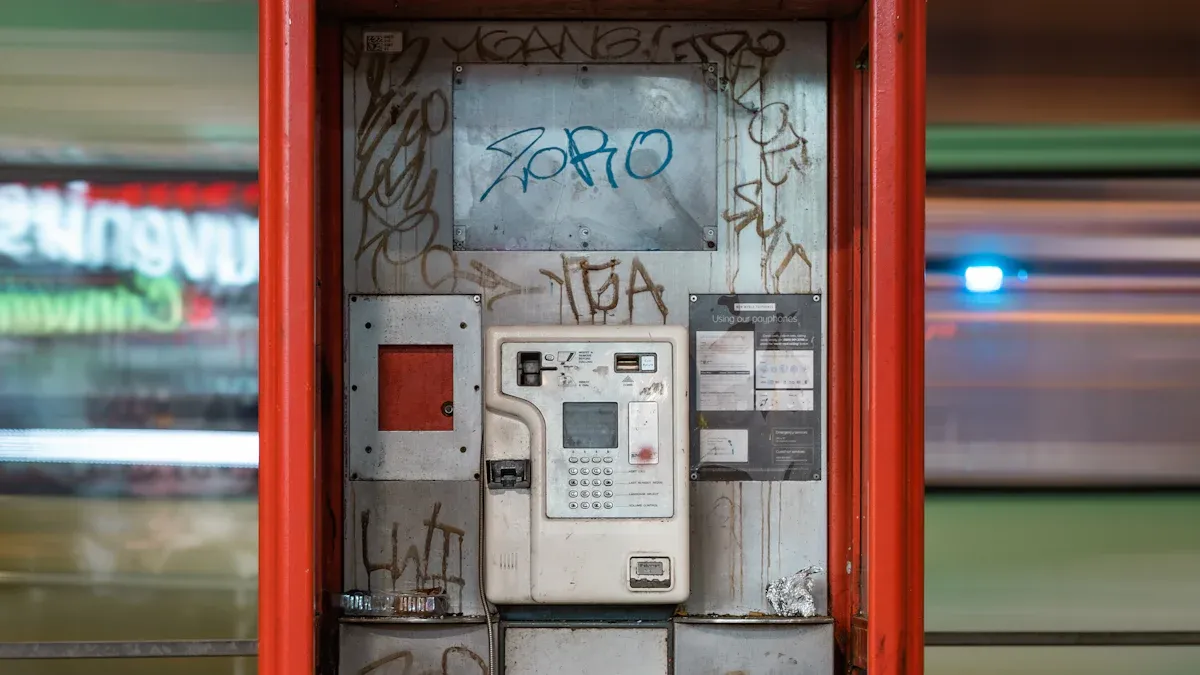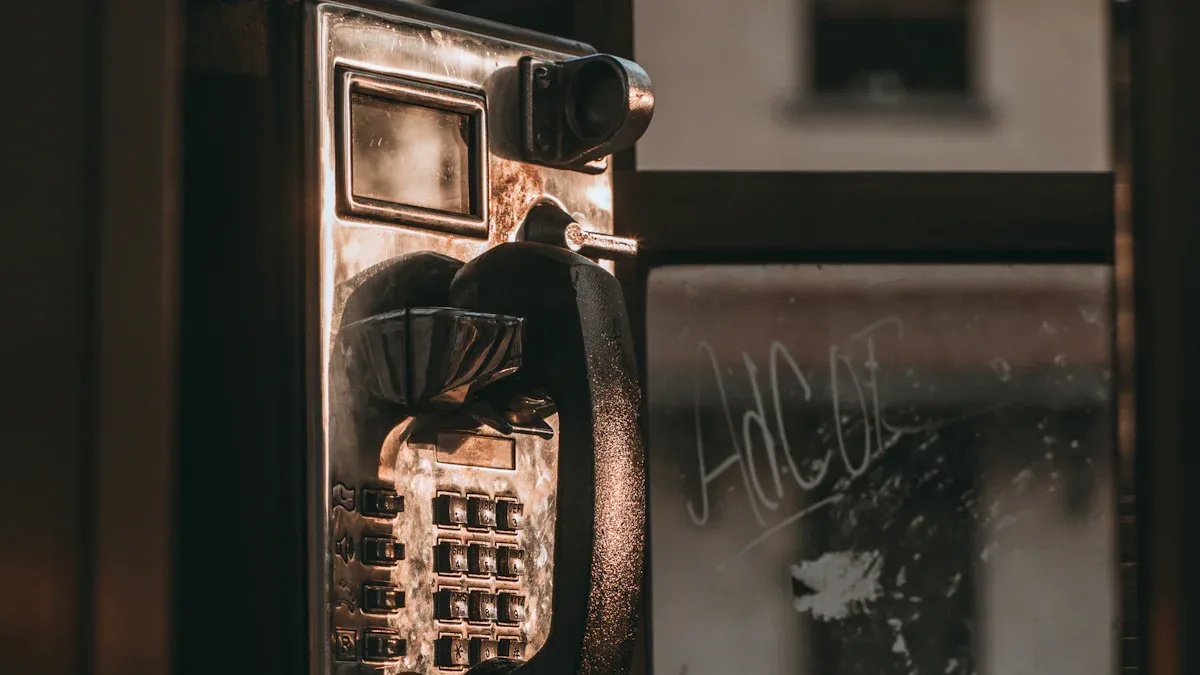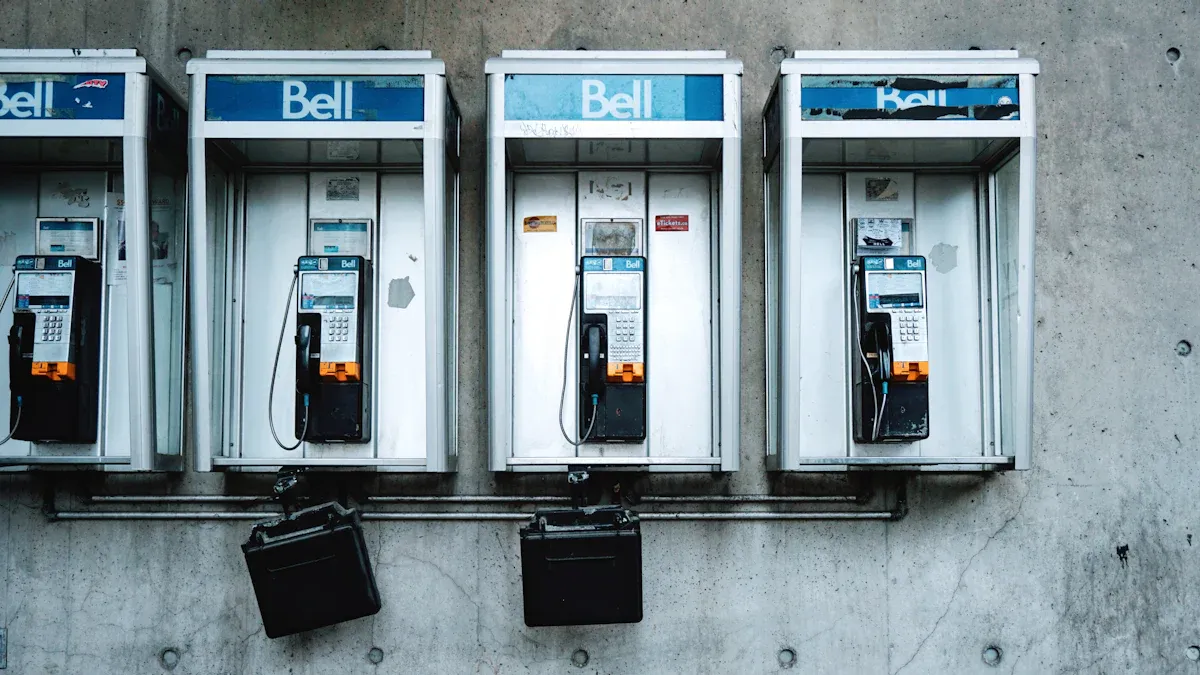
Imagine a time when you couldn’t carry a phone in your pocket. Telephone kiosks became essential for staying connected. These kiosks provided access to communication for everyone, especially in emergencies or when home phones weren’t available. The kiosk telephone handset symbolized reliability and convenience. However, mobile phones replaced them, making kiosks almost obsolete.
Key Takeaways
- Telephone kiosks changed how people communicated in the 1880s. They gave everyone, especially during emergencies, access to public phones.
- Mobile phones became popular in the late 1900s. They caused kiosks to lose importance because phones were easier and more private.
- Now, many old kiosks are used as Wi-Fi spots or tiny libraries. This keeps their history alive while meeting today’s needs.
The Early Days of Kiosk Telephone Handsets
The invention of the first telephone kiosks in the 1880s
You might find it hard to imagine a world without instant communication. In the 1880s, the first telephone kiosks appeared, offering a revolutionary way to connect people. These early kiosks were simple booths where you could make a call using a public telephone. They were introduced shortly after Alexander Graham Bell’s invention of the telephone. Businesses and public spaces quickly adopted them to provide access to this new technology.
The idea behind these kiosks was to make telephones available to everyone, not just the wealthy. At the time, owning a personal telephone was expensive. Public kiosks bridged this gap, allowing people from all walks of life to communicate. This innovation marked the beginning of a new era in public communication.
Fun Fact: The first telephone kiosk was installed in Berlin, Germany, in 1881. It was a wooden booth with a single telephone inside.
Early designs and the introduction of coin-operated telephones
The first kiosk telephone handsets were basic, but they quickly evolved. Early designs featured enclosed booths to ensure privacy. These booths often had wooden frames and glass panels. You could step inside, close the door, and make your call without distractions.
In the 1890s, coin-operated telephones were introduced. This was a game-changer. Instead of relying on an operator to connect your call, you could insert a coin and dial directly. This system made public telephones more accessible and convenient. It also allowed kiosks to be placed in more locations, such as train stations, post offices, and busy streets.
Coin-operated telephones also introduced a sense of independence. You didn’t need to rely on someone else to make a call. All you needed was a coin and a few minutes of your time. This innovation laid the foundation for the widespread use of kiosk telephone handsets in the 20th century.
The role of kiosks in urban and rural connectivity
Telephone kiosks played a crucial role in connecting urban and rural areas. In cities, they became a common sight on street corners and in public spaces. They allowed people to stay in touch with family, friends, and businesses. For many, kiosks were the only way to make a call when they were away from home.
In rural areas, kiosks were even more important. Many small towns and villages didn’t have widespread telephone networks. A single kiosk could serve an entire community. Farmers, shopkeepers, and travelers relied on these kiosks to communicate. They became lifelines for emergencies and essential services.
Note: In some remote areas, telephone kiosks were powered by hand-cranked generators. This ensured they could function even without a stable electricity supply.
The kiosk telephone handset became a symbol of connectivity and progress. It represented a world where communication was no longer limited by distance. These early kiosks paved the way for the modern communication systems we use today.
The Golden Era of Telephone Kiosks

Iconic designs like the British red telephone box
When you think of telephone kiosks, the British red telephone box likely comes to mind. Designed by Sir Giles Gilbert Scott in 1924, this bright red booth became a global icon. Its cast-iron frame, domed roof, and small glass panes gave it a timeless look. The bold red color ensured it stood out in any environment, making it easy to spot in emergencies.
These kiosks weren’t just functional; they became symbols of British culture. Tourists often posed for photos with them, and they appeared in countless films and TV shows. Even today, many of these red boxes remain preserved as nostalgic landmarks, reminding you of a time when public telephones were essential.
The widespread use of kiosk telephone handsets in the 20th century
During the 20th century, kiosk telephone handsets became a part of daily life. You could find them in cities, towns, and even remote areas. People used them to make quick calls, check on loved ones, or conduct business. These handsets were built to last, with sturdy designs that could withstand heavy use.
Public telephones became especially important during emergencies. If your car broke down or you needed help, a nearby kiosk provided a lifeline. The reliability of the kiosk telephone handset made it a trusted tool for communication, long before mobile phones existed.
How kiosks shaped public spaces and communication habits
Telephone kiosks didn’t just connect people; they shaped how you interacted with public spaces. They became meeting points, landmarks, and even shelters during bad weather. Their presence encouraged you to step outside your home to communicate, fostering a sense of community.
In urban areas, kiosks lined busy streets, creating a network of accessible communication hubs. In rural regions, a single kiosk often served as the heart of the community. These booths taught you to value shared resources and adapt to a world where communication wasn’t always instant.
Tip: Next time you see an old telephone kiosk, take a moment to appreciate its role in shaping modern communication.
The Decline of Telephone Kiosks
The rise of mobile phones and personal communication devices
You probably carry a mobile phone everywhere you go. This wasn’t always the case. In the late 20th century, mobile phones began to change how people communicated. These devices offered convenience and privacy that telephone kiosks couldn’t match. You no longer needed to search for a kiosk or carry coins to make a call. Instead, you could connect with anyone, anytime, from the palm of your hand.
As mobile phones became more affordable, their popularity soared. By the early 2000s, even basic models allowed you to send text messages and store contacts. This made kiosks seem outdated. Why would you use a public telephone when you had a personal device that offered so much more? The rise of mobile phones marked the beginning of the end for kiosk telephone handsets.
Did You Know? The first mobile phone call was made in 1973 by Martin Cooper, a Motorola engineer. It took decades for mobile phones to become widely available, but they eventually replaced public telephones.
Maintenance challenges and reduced demand for public telephony
Maintaining telephone kiosks became a significant challenge as their usage declined. You might not realize it, but keeping kiosks operational required regular upkeep. Technicians had to repair broken handsets, clean the booths, and ensure the coin mechanisms worked. Vandalism and theft added to these costs, making kiosks expensive to manage.
With fewer people using public telephones, the revenue from kiosks dropped. This made it harder for companies to justify their maintenance. Many kiosks were removed from public spaces, leaving only a few in operation. You may have noticed that even in busy cities, kiosks became rare sights. The reduced demand for public telephony made it clear that kiosks were no longer essential.
The obsolescence of kiosk telephone handsets in the digital age
The digital age brought even more changes to communication. Smartphones replaced basic mobile phones, offering internet access, video calls, and countless apps. You could do much more than just make a call. This made kiosk telephone handsets seem like relics of the past.
Public telephones couldn’t keep up with the rapid advancements in technology. They lacked the features and flexibility that modern devices provided. As a result, kiosks became obsolete. You might still find a few kiosks in certain areas, but they are often unused or repurposed for other functions. The digital age has made it clear that the era of kiosk telephone handsets is over.
Tip: If you ever come across an old telephone kiosk, take a moment to think about its history. It’s a reminder of how far communication technology has come.
Modern Adaptations of Telephone Kiosks

Repurposing kiosks as Wi-Fi hotspots and charging stations
You might have noticed that some old telephone kiosks have found new life in the digital age. Many cities have repurposed these booths as Wi-Fi hotspots and charging stations. This transformation allows them to serve modern needs while preserving their iconic presence.
For example, in London, several red telephone boxes now provide free Wi-Fi access. You can step inside, connect your device, and browse the internet. Some kiosks even include USB ports for charging your phone or tablet. This adaptation makes them useful again, especially in busy urban areas where connectivity is essential.
Tip: If you see a repurposed kiosk, take advantage of its services. It’s a great way to stay connected on the go.
Nostalgia-driven preservation and creative uses
Many communities have chosen to preserve telephone kiosks for their nostalgic value. These booths remind you of a time when public telephones were essential. Instead of removing them, people have found creative ways to reuse them.
Some kiosks have been turned into mini libraries where you can borrow or donate books. Others have become art installations, coffee stands, or even tiny museums. These creative uses keep the kiosks relevant while celebrating their history.
Fun Fact: In some villages, kiosks have been converted into defibrillator stations, providing life-saving equipment in emergencies.
The symbolic legacy of kiosks in the modern world
Even though most kiosks no longer function as telephones, they remain symbols of communication and connection. They remind you of how far technology has come and how it continues to evolve.
Kiosks also serve as cultural landmarks. Tourists often seek them out for photos, and they appear in movies and advertisements. Their enduring presence shows that even outdated technology can leave a lasting impact.
Note: The next time you see a telephone kiosk, think about its journey from a communication hub to a cultural icon. It’s a testament to human creativity and adaptability.
The journey of telephone kiosks reflects the evolution of communication. These booths connected communities and shaped public spaces. Mobile phones, however, replaced them with faster, more personal options.
Today, kiosks find new purposes. Many serve as Wi-Fi hubs, libraries, or art pieces.
Reminder: These adaptations honor their legacy, blending history with modern needs.
FAQ
What made kiosk telephone handsets so popular in the past?
Kiosk telephone handsets offered reliable communication when personal phones were rare. They connected people in emergencies and provided access to public telephony for everyone.
Why are telephone kiosks still preserved today?
Many kiosks hold cultural significance. Communities repurpose them as Wi-Fi hubs, libraries, or art installations, keeping their history alive while serving modern needs.
Can you still use a kiosk telephone handset today?
In most places, you can’t use them anymore. However, some kiosks remain functional in specific areas or have been adapted for other purposes.


